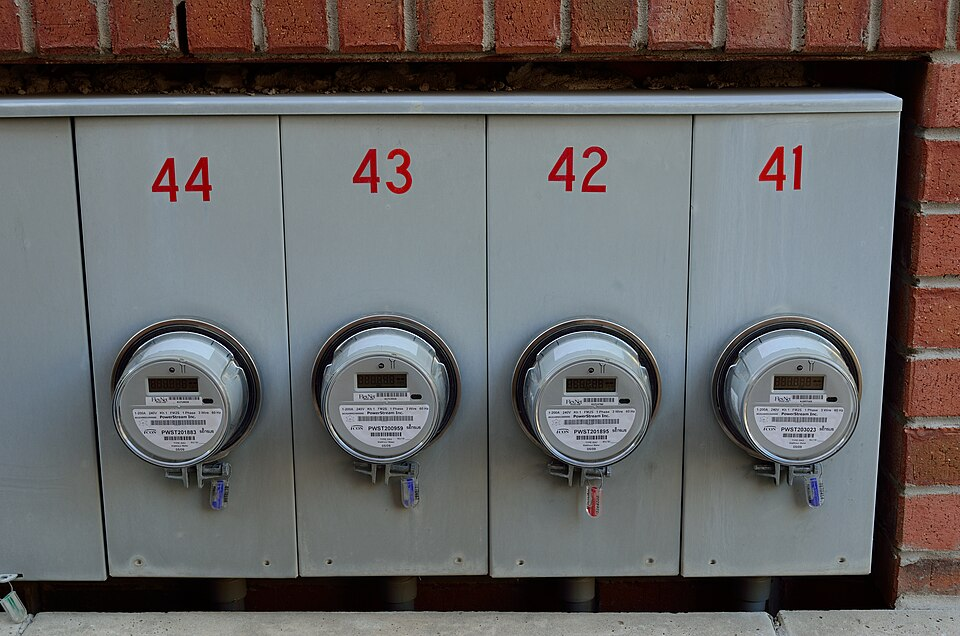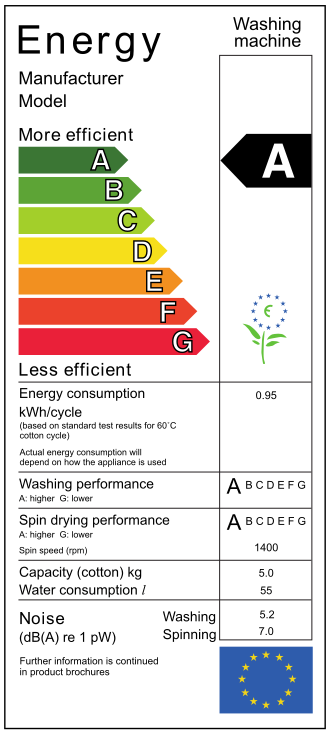OCR Specification focus:
‘Interpret power ratings and energy consumption; link to cost and performance comparisons.’
Power and energy in real devices describe how electrical and mechanical systems convert energy over time, revealing performance, efficiency, and cost relationships central to practical physics applications.
Understanding Power in Real Devices
In real-world systems, power indicates how rapidly a device transfers or converts energy. Power quantifies performance — high power corresponds to faster energy transfer or greater output. It is crucial for comparing devices, predicting running costs, and evaluating efficiency in engineering and domestic contexts.
EQUATION
—-----------------------------------------------------------------
Power (P) = Energy transferred (W) ÷ Time taken (t)
P = W ÷ t
P = Power, measured in watts (W)
W = Energy transferred or work done, measured in joules (J)
t = Time, measured in seconds (s)
—-----------------------------------------------------------------
Power ratings printed on appliances, such as “1000 W kettle” or “60 W bulb”, indicate the rate of energy transfer when the device operates at normal conditions. A 1000 W kettle converts 1000 J of energy each second, mainly heating water but with some losses to the surroundings.
Power Ratings and Performance Comparisons
Manufacturers assign power ratings to help users assess how much energy a device consumes or outputs in a given time. These ratings serve several roles:
Performance indicator: Higher ratings typically mean faster operation (e.g., quicker heating or stronger motion).
Design consideration: Engineers balance desired performance with safety, thermal limits, and energy efficiency.
Energy efficiency insight: Comparing input and useful output reveals how effectively a device converts energy without waste.
A high-rated motor may not necessarily be more efficient — it might simply consume more energy to deliver greater mechanical work. The key is understanding how much of that input energy performs useful work compared with how much becomes heat or sound losses.
Energy Consumption in Practice
Energy consumption measures how much total energy a device uses over a specified period. Electricity suppliers bill users based on this, so linking energy use to cost is an essential skill in physics and daily life.

A modern electricity (kWh) meter with a digital display used by utilities to measure household energy consumption. Readings increment as devices draw power over time, giving total kWh for billing. The image illustrates the practical meaning of E = P × t. Source.
EQUATION
—-----------------------------------------------------------------
Energy transferred (E) = Power (P) × Time (t)
E = P × t
E = Energy transferred, measured in joules (J) or kilowatt-hours (kWh)
P = Power, measured in watts (W) or kilowatts (kW)
t = Time, measured in seconds (s) or hours (h)
—-----------------------------------------------------------------
Using kilowatt-hours (kWh) simplifies large-scale energy measurements. One kilowatt-hour equals the energy transferred by a 1 kW device operating for one hour. Energy companies use this unit because it directly relates to consumer usage and costs.
Relating Energy Use to Cost
The cost of running a device depends on its power rating, duration of use, and the unit price of electricity. For example, a higher-powered heater costs more to run for the same period than a low-powered lamp because its energy transfer rate is greater.
Common relationships include:
Higher power → higher cost per hour of operation, if used continuously.
Longer usage time → proportionally greater total cost, even for efficient devices.
Improved efficiency → reduced total cost, as less input energy is wasted as heat or vibration.
Consumers therefore consider both the rated power and efficiency when choosing between appliances such as washing machines, refrigerators, or computers.
Real Devices: Balancing Power and Efficiency
Every device transforms energy according to the principle of conservation of energy, meaning total energy is conserved but can change form. However, not all transferred energy is useful — some becomes waste energy, typically as heat or sound. Understanding this allows better comparison between technologies.
Energy Flow in Real Systems
For any device, the input power equals the useful output power plus wasted power:
Useful output power performs the intended job (e.g., light production in a lamp).
Wasted power represents losses due to inefficiencies (e.g., heating of wiring or components).
Improving device design aims to minimise wasted power, often by using superior materials, better insulation, or improved circuitry.
EQUATION
—-----------------------------------------------------------------
Efficiency (%) = (Useful output power ÷ Total input power) × 100%
Useful output power = Power contributing to desired effect (W)
Total input power = All power supplied to device (W)
—-----------------------------------------------------------------
A 90% efficient motor converts 90% of its input energy into mechanical work, losing only 10% to heating or other forms. Even small improvements in efficiency can significantly reduce energy use and operating costs over time.
Real Examples of Power and Energy Behaviour
Electric kettle: Converts electrical energy into thermal energy to heat water. Most energy becomes useful heat, though some is lost through radiation and convection.
Light bulb: Converts electrical energy mainly into light; LEDs have higher efficiency than filament bulbs as less energy is wasted as heat.
Car engine: Converts chemical energy of fuel into kinetic energy; large amounts are lost as heat and sound, leading to relatively low overall efficiency.
Computer: Electrical energy powers processors and memory; efficiency depends on design and cooling, with power ratings guiding expected energy use.
Each example illustrates how energy transfer pathways determine performance, cost, and environmental impact. Students should recognise that even highly efficient systems never achieve 100% conversion.
Linking Power, Energy, and Cost Comparisons
In domestic and industrial settings, comparing power ratings allows users to choose devices balancing performance with affordability. For example:
A 2000 W heater warms a room faster but consumes twice the energy of a 1000 W model over the same period.
Over time, energy-efficient appliances reduce both operational costs and environmental impact, aligning with sustainability goals.
Modern product labelling (e.g., energy efficiency ratings) provides easy-to-read indicators of expected energy use and running costs.

Sample EU energy efficiency label with the familiar coloured A–G scale used to compare appliances. It helps relate power and energy use to running cost and performance. Note: label styling and class ranges have changed over time; the educational principle remains the same. Source.
Understanding power and energy relationships supports informed decision-making in both physics and everyday life. Whether assessing the power output of an engine or the energy draw of household lighting, the same fundamental principles apply — the rate of energy transfer defines power, and total consumption defines cost and efficiency.
FAQ
Power ratings are determined under standard test conditions, usually at a fixed voltage and temperature. In real use, factors such as voltage fluctuations, component wear, and ambient temperature can change the actual power drawn.
For example, motors draw more current when starting, briefly exceeding their rated power. Similarly, older or dirty heating elements can increase resistance and reduce efficiency. Manufacturers quote the rated power as an average expected performance under normal operating conditions.
The joule is the SI unit of energy, but it is too small for practical energy billing.
1 kWh = 3.6 × 10⁶ joules.
Typical households consume thousands of times this amount daily.
The kilowatt-hour provides a convenient, easily measurable unit for long-term energy consumption. It directly connects to device power ratings (in kilowatts) and operation times (in hours), simplifying both energy metering and cost calculations.
Higher efficiency means a greater proportion of input energy becomes useful output rather than waste heat or sound.
As a result:
Less electrical energy is drawn for the same task, reducing running costs.
Lower energy demand decreases fossil fuel use in power generation, cutting greenhouse gas emissions.
This dual benefit underpins energy-labelling schemes and government efficiency regulations across appliances and industrial systems.
Energy losses arise from several mechanisms depending on the device:
Resistive heating: Current through conductors or coils generates heat (I²R losses).
Friction: In moving parts such as motors or fans, energy is dissipated as heat and sound.
Radiation and convection: Hot components emit or transfer heat to their surroundings.
Design improvements like better materials, lubrication, or insulation reduce these losses and enhance overall efficiency.
Efficiency ratings are established through controlled laboratory tests following international standards (such as IEC or EU regulations).
Devices are run under defined conditions of load, temperature, and supply voltage.
Input energy (from the power source) and useful output energy (e.g. light, heat, or motion) are measured precisely.
The efficiency is calculated as a percentage of output to input energy.
These results are compared against threshold values to assign an energy class (e.g. A to G). This ensures consistent, comparable ratings across manufacturers and models.
Practice Questions
Question 1 (2 marks)
A kettle is rated at 2000 W. Explain what this power rating means and how it relates to the energy transferred when the kettle operates for 1 second.
Mark scheme:
1 mark: States that the kettle transfers 2000 joules of energy every second.
1 mark: Explains that power is the rate of energy transfer or work done per unit time.
Question 2 (5 marks)
A washing machine has a power rating of 2.4 kW and an efficiency of 80%. It operates for 45 minutes. The cost of electricity is 35 pence per kilowatt-hour.
(a) Calculate the total energy supplied to the washing machine by the mains in kilowatt-hours.
(b) Determine the useful energy output.
(c) Calculate the cost of running the washing machine for this period.
(d) Suggest one design improvement that could increase the overall efficiency of the washing machine.
Mark scheme:
(a) 1 mark: Converts 45 minutes to 0.75 hours.
1 mark: Calculates total energy input = 2.4 × 0.75 = 1.8 kWh.
(b) 1 mark: Calculates useful energy = 0.80 × 1.8 = 1.44 kWh.
(c) 1 mark: Calculates cost = 1.8 × 35p = 63 pence (or £0.63).
(d) 1 mark: States one appropriate improvement, e.g. better motor design, improved insulation, or reduced friction in moving parts.

